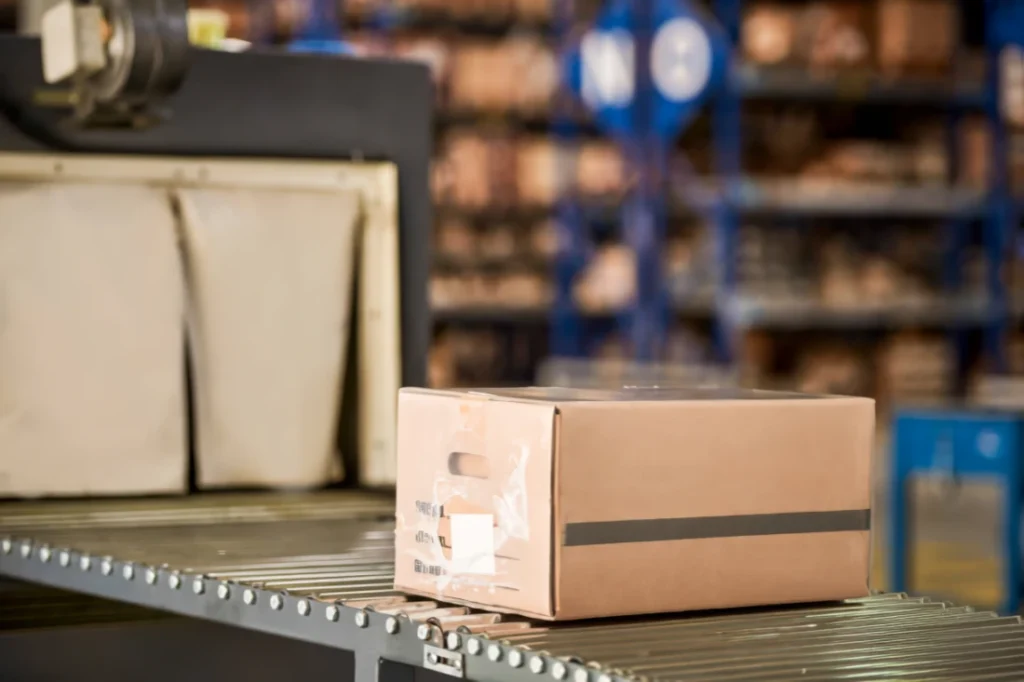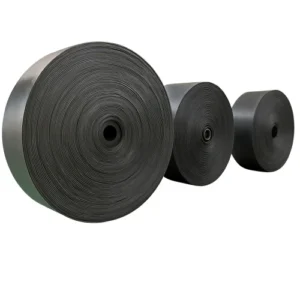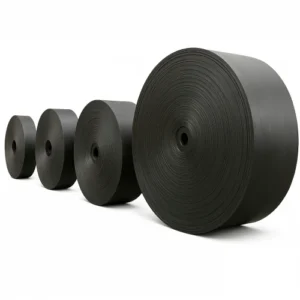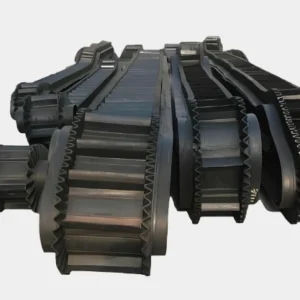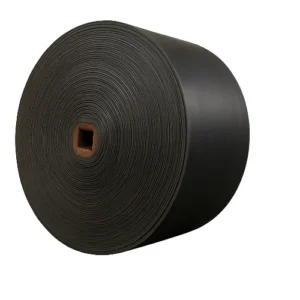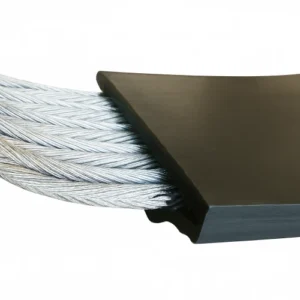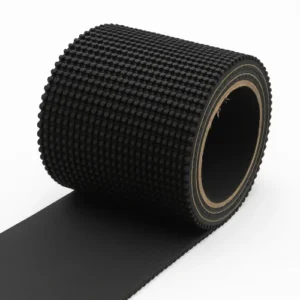1. Introduction: the key role of logistics centers
With the gradual globalization of business today, the logistics center has become a crucial node in the supply chain, and people are demanding more and more fast and efficient logistics, and these logistics companies such as yunexpress , SF and so on have their own unique logistics and warehousing systems. They are not only the distribution center of goods, but also the hub to ensure the fast and efficient flow of products from the production end to the consumption end. In this process, the application of automation technology is undoubtedly the key to improve logistics efficiency, which warehouse conveyor belt is an indispensable part of the logistics center.
Imagine a huge logistics center every day to deal with thousands of orders, goods in and out of the busy as the stars moving in the night sky, if only by manual labor, the need for personnel will be an astronomical figure. In order to ensure that the goods from one corner of the warehouse to another corner of the path is unimpeded, warehouse conveyor belt is like a never-ending artery, conveying the warehouse “blood” – goods. It not only makes the movement of goods orderly, but also reduces human errors in operation through a high degree of automation.
The emergence of warehouse conveyor belt has greatly changed the operation mode of traditional logistics centers. The old scenario of relying on manual handling of goods has now been replaced by conveyor belt systems. Automated conveyor belts not only improve the efficiency of handling goods, but also ensure that every object is delivered exactly where it is supposed to be through their precise control system. This is especially important for large warehouses and e-commerce businesses, where time means everything in the rapidly expanding e-commerce marketplace, and where the slightest delay can affect the customer experience.
More than that, rubber conveyor belts are an integral part of logistics centers due to their outstanding durability and adaptability. These conveyor belts are able to withstand the high frequency operation of large volumes of goods and are extremely resistant to wear and tear, even in the harshest environments. Whether it’s a cold winter warehouse or a hot and humid storage space, the rubber conveyor belt can easily handle the task and ensure the continuity of warehouse operations.
As the e-commerce industry booms, logistics centers are under increasing pressure. The number of orders to be processed per day is soaring, and the speed of goods flow is becoming more and more demanding, that traditional logistic methods have long been unable to meet the market demand. The flexibility of custom conveyor belts meets this need. By customizing the design to the specific layout of the warehouse, the conveyor belt system not only meets the space requirements of different warehouses, but also adjusts the conveyor speed and load capacity according to the volume and weight of the goods. This customized solution not only optimizes every aspect of the goods flow, but also significantly improves warehouse efficiency.
Logistics centers, as hubs for cargo flow, face problems such as limited storage space, a wide variety of goods, and unstable order processing peaks. By introducing the warehouse conveyor belt, these problems have been significantly improved. Like a precision gear set, the automated conveyor belt system allows each operational link in the logistics center to seamlessly connect, reducing friction during operations and making the entire warehousing process smoother and more efficient.
Today, the logistics center is no longer a closed “black box”, modern warehouse conveyor belt system through the integration of other automated equipment (such as sorters, stacker cranes, etc.), to achieve real-time transmission and sharing of information. When the goods move on the conveyor belt, the data will be updated to the system in real time, and the warehouse managers can control the position and status of each piece of goods at any time. This highly intelligent mode of operation not only improves the transparency of warehouse management, but also makes it possible to significantly improve management efficiency.
So, with the continuous growth of logistics demand and technological innovation, conveyor belt systems will bring what changes to the logistics industry?

2. How conveyor belts are changing inventory management in logistics centers
In logistics centers, inventory management and the efficiency of product sorting is one of the key factors for successful business operations. In the past, inventory management mainly relies on manual operation, prone to errors and delays, just imagine, a person from getting the product, confirm the courier face sheet, and then put the courier face sheet to the corresponding grouping, each piece of courier according to the 5-second calculation, then for a large courier company, a day’s product handling at least hundreds of thousands of pieces of this state of the big load work, the bulk of the error is inevitable. Now, with the application of warehouse conveyor belt, the operation of the logistics center has undergone a fundamental change. It not only enhances the work efficiency, but also effectively reduces the errors caused by human operation, and significantly improves the accuracy and speed of inventory management.
2.1 Enhance work efficiency and speed
First of all, the automation design of warehouse conveyor belt has significantly improved the efficiency of goods handling. Data shows that an automated conveyor belt system can increase order processing speed by about 30% to 50%, which means that the logistics center can process more orders in the same amount of time, greatly reducing the waiting time for goods between different operating areas. For example, when a product is taken off the shelf, it can immediately be transported to the packing or picking area via the warehouse conveyor belt. The whole process is almost seamless and correspondence between individual conveyor belts is ensured by the face sheets on the surface of the product being fed through the self-adjustment of the conveyor belt’s speed, as well as the simultaneous working of other fittings.
Not only that, but the high durability of the rubber conveyor belt allows it to excel in high-frequency operations, allowing it to run consistently for long periods of time. Even during busy shopping seasons or peak periods, these conveyor belts are able to carry large volumes of goods, reducing the risk of equipment failure and ensuring continuity of operations. Because of this, more and more companies are opting for custom conveyor belts to customize to their warehouse layout and operational needs to further improve efficiency, especially for example, large e-commerce companies like JD, Amazon, etc., as it is no longer a consideration but a necessity for them.
2.2 Reducing manual errors and improving accuracy
Secondly, another important role of warehouse conveyor belt in inventory management is the significant reduction of manual errors. According to data, an automated conveyor belt system integrated with a warehouse management system (WMS) is able to reduce the error rate in manual operations by approximately 70%, while increasing the accuracy of orders to nearly 99%. This ability to update inventory information in real time allows warehouse managers to stay on top of the status and location of goods, greatly reducing customer dissatisfaction and operational losses due to inventory errors.
For example, in the e-commerce industry, the system updates inventory as soon as a customer places an order, ensuring real-time reflection of product availability and avoiding order delays or cancellations due to insufficient inventory. The flexibility of automated conveyor systems not only allows for the handling of regular goods, but can also be customized to meet the needs of different types of goods. Whether it’s slow moving fragile items or fast handling of large shipments, conveyor systems can be adapted to meet operational needs.
The Warehouse conveyor belt also optimizes the space utilization of the warehouse, reducing the need for human intervention through a rational layout and automation system, resulting in a smoother and more efficient flow of goods. By reducing friction and bottlenecks in operations, these conveyor belts not only increase efficiency, but also improve customer satisfaction while reducing costs.
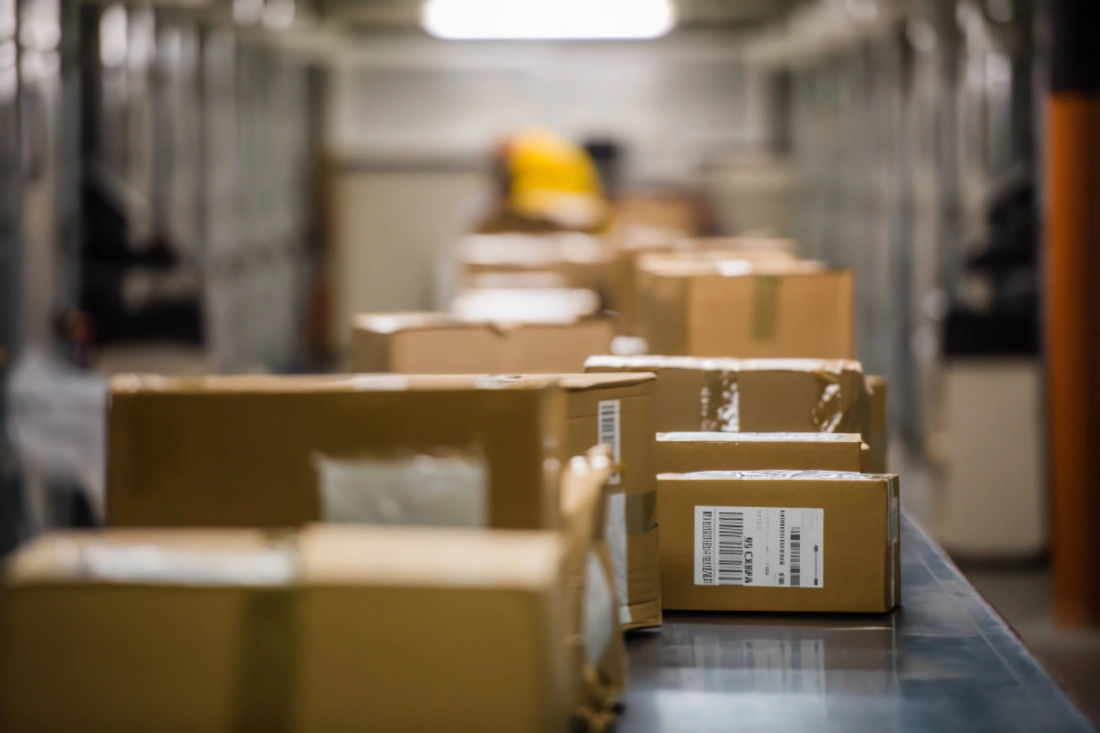
3. Case Study: Jingdong’s Warehouse Conveyor Belt System
Jingdong’s logistics system through a highly intelligent warehousing and distribution network, to create the industry’s leading “same day delivery” and “next day delivery” services. Imagine, in the morning in jingdong order, goods in the afternoon from hundreds of kilometers away from your doorstep, behind this is jingdong huge and efficient automated logistics system in support.
Jingdong has set up a number of “Asia One” intelligent logistics parks in China, including the park in Kunshan is one of the world’s largest intelligent logistics facilities, which can handle up to 4.5 million packages a day. The park is equipped with more than 80 advanced sorting lines and tens of thousands of intelligent sorting robots, ensuring 99.99% sorting accuracy . These highly automated facilities help Jingdong maintain an efficient order processing speed during peak shopping periods such as Double 11 and 618. In contrast, traditional logistics systems rely on manual operations, which are not only inefficient but also prone to errors and delays.
3.1 The automated layout of Jingdong’s warehouse center
Jingdong warehouse center layout to intelligent, automation as the core, through the warehouse conveyor belt system, goods can be seamlessly transported between different workstations in the warehouse. Kunshan Qiandeng “Asia One” Intelligent Logistics Park warehousing area of more than 500,000 square meters, is a typical representative of the automated layout of Jingdong, which is one of the distribution centers of the express delivery of Jingdong in China. The park is not only equipped with efficient conveyor belt systems, but also combines advanced sorting technology, so that goods can be transported and sorted efficiently around the clock (JD Logistic).
In contrast, traditional warehousing centers rely on manual handling, which is prone to backlogs and delays in the release of goods. Jingdong’s custom conveyor belt system is able to customize the configuration of conveyor belts according to the layout of different warehouses, maximizing the utilization of warehouse space and ensuring the consistency and accuracy of cargo handling, and mechanical systems can confirm the delivery address of the product through the bar code on the product and send it to the corresponding triggered product piles, and then the courier trucks will take the sorted products immediately. Departure.
3.2 How Jingdong optimizes inventory management through conveyor belts
In Jingdong’s warehouse center, the warehouse conveyor belt not only improves transportation efficiency, but also seamlessly integrates with the warehouse management system (WMS). In this way, every movement of goods on the conveyor belt is recorded in real time, ensuring that managers know the exact location and status of goods at all times. Through this real-time tracking, Jingdong’s order fulfillment accuracy has been increased to over 99% .
For example, the intelligent logistics park in Wuhan is able to handle more than 1 million orders per day, greatly easing logistics pressure in the central region. Jingdong uses rubber conveyor belts to efficiently transport different types of goods to the picking and packing areas, reducing human error and the risk of damage during operations .
Inventory management has become more efficient and accurate through Jingdong’s automated conveyor system. Real-time inventory updates allow the warehouse to respond quickly to order demands, reducing out-of-stocks and oversells and further optimizing the customer experience.

4. The impact of conveyor belts on cost savings and operational efficiency
Automated warehouse conveyor belt systems not only play a key role in logistics operations, but also help companies to significantly reduce operational costs and improve efficiency in several dimensions. The application of this technology enables logistics companies to operate at lower costs while providing fast, reliable services to meet growing market demands.
4.1 Reduced Operating Costs
Automation systems not only reduce reliance on labor, but also achieve operational cost savings in a more comprehensive way. For UPS, the introduction of automation has led to a significant reduction in the need for manual labor for parcel sorting and handling. For example, UPS utilizes Autonomous Guided Vehicles (AGVs) and warehouse conveyor belts to allow small packages to be transported autonomously through the warehouse, a technology that reduces manual handling costs by as much as 50%, especially in busy logistics centers .
This technology reduces manual handling costs by up to 50 percent, especially in busy logistics centers .
UPS has achieved significant energy savings by optimizing energy management. Through an intelligent monitoring system, conveyor belt equipment can automatically adjust its operating speed according to load demand, avoiding wasted energy consumption. UPS reportedly reduces power costs by millions of dollars annually through this intelligent energy management system . In addition, UPS reduces damage and loss of goods through automated conveyor belts. rubber conveyor belts ensure that goods remain intact during transport due to their excellent abrasion resistance and toughness. This reduction in shrinkage saves UPS about 5 percent of its return and repair costs each year.
In addition to hardware savings, UPS has also improved warehouse space utilization through automated systems. the flexible design of the Custom conveyor belt allows for a more compact warehouse layout, reducing the amount of additional aisle space required in traditional operations. This not only increases storage efficiency by 15 percent per square meter, but also effectively reduces additional land costs
4.2 Improved Operational Efficiency
In terms of operational efficiency, automated conveyor systems not only simplify operational processes, but also significantly speed up the processing of goods. Amazon has introduced warehouse conveyor belt systems on a large scale in the layout of its global logistics centers to cope with millions of orders per day. By integrating with the Warehouse Management System (WMS), Amazon is able to track and update inventory information in real time, ensuring that each item is precisely located. This real-time updating mechanism allows Amazon to reduce order processing time to less than a few hours during peak shopping periods, dramatically improving order fulfillment efficiency .
In addition, Amazon’s conveyor belt system demonstrates a high degree of flexibility in handling different types of goods. Its custom conveyor belt adjusts the speed and angle of the conveyor belt according to the size, weight, and shape of the goods, ensuring that each item is transported to the appropriate area in the best way. This not only reduces the risk of goods piling up and getting blocked, but also improves the overall handling capacity of the warehouse. As a result of this optimization, Amazon’s order processing capacity has increased by approximately 30% and inventory management efficiency has improved significantly .
Meanwhile, FedEx has optimized the package processing of its global distribution network with an automated conveyor belt system.FedEx’s Global Sorting Center in Memphis is capable of handling more than 600,000 packages per hour, and this efficient capacity allows FedEx to maintain fast, reliable shipping services around the world. Automated conveyor belts reduce human intervention, allowing shipments to follow a set path to their destination, greatly reducing delays and errors caused by human error. In addition, FedEx also uses a data monitoring system to detect the conveyor’s operating status in real time and predict potential failures, thereby reducing maintenance and repair costs and further improving operational efficiency.
In addition to speed improvements, FedEx has reduced inventory pressure and dwell time through automated systems, with goods spending 20 percent less time in the warehouse on average. This change not only increased the speed of customer order fulfillment, but also reduced the complexity of inventory management .

5. Flexibility and customization of conveyor systems
As industries diversify, conveyor belt systems are no longer simply a means of transportation, but a “lifeline” that is tailored to the needs of complex products. Whether in heavy industry, fine manufacturing or special industries, the flexibility and customization of the warehouse conveyor belt system gives it an indispensable place in modern production and logistics processes.
5.1 Customization for the nature of the product
The nature of the product determines the core design of the conveyor belt system – its speed, load capacity and operation must be adapted to the weight, volume and fragility of the product. The grain industry, for example, is a case in point. How large quantities of peeled grain, by doing the final packing into bags, need to be transported on a RUBBER conveyor belt. Does such a large volume of grain need all the labor support? The answer is no. This scenario is not only inefficient, but also increases operational risk. Today, however, customized conveyor belt systems, which can not only carry huge weights, but also transfer them smoothly between different stations, have drastically improved assembly efficiency.
Similarly, the needs of the food processing industry are even more complex, especially when dealing with fresh food, where temperature control, hygiene requirements and speed accuracy are essential. Imagine what would happen if a conveyor belt transporting eggs was too fast or at the wrong angle. Not only would these foodstuffs break, but they could even lead to bigger quality problems. Consequently, conveyor belts need to be precisely adjusted to the vulnerability of the foodstuff in terms of speed and angle to minimize the impact on the product. For cold chain food products, conveyor belts also need the ability to operate at low temperatures to ensure that the product is transported in a fresh state.
The medical device and pharmaceutical industries also place high demands on the transportation of products, and conveyor systems must meet strict cleanliness and temperature control requirements. Customized custom conveyor belt systems maintain the stability of pharmaceuticals during transport, preventing temperature fluctuations that can lead to drug failure. In addition, the flexibility of the conveyor belt system allows it to be dynamically adapted to the characteristics of different medications, ensuring that each batch of medication is shipped under optimal conditions. Who wants to take the risk of a drug failing in transit?
5.2 Customization for product material
The material of the product has a direct impact on the choice of conveyor material. For example, the transportation of metal products and heavy equipment requires a belt with high compressive strength and durability. For these products, the rubber conveyor belt system is the best choice. Their abrasion resistance and high load capacity ensure that the metal components remain stable over long periods of intense operation. Imagine the damage and scratches that occur when steel is conveyed – not only does this affect the quality of the product, but it can also be costly. A conveyor belt system made of high-strength materials significantly reduces this risk.
In contrast, lightweight and fragile products such as textiles and electronics require more delicate conveyor belts. Production lines for electronics in particular require anti-static features, as sensitive electronic components can be irreversibly damaged if static electricity is generated during transport. In addition, such systems need to be shock-absorbing to ensure the safety of precision equipment during transportation. custom conveyor belts are flexible in the sense that they can be adapted to the specific needs of these products in terms of material and conveyor parameters, guaranteeing the safety and integrity of the product throughout the entire process.
For the chemical and pharmaceutical industries, the choice of materials is even more demanding. Chemicals are often corrosive, and pharmaceuticals require the highest level of cleanliness in the transportation environment. In response, conveyor belts are often made of special chemical-resistant materials or stainless steel to ensure that no chemical reaction or contamination occurs when they come into contact with these products. Imagine the consequences if a shipment of chemicals is contaminated due to an improperly made conveyor belt. Therefore, conveyor belts not only need to be adapted to the product material, but also need to ensure a safe and stable environment during transportation.
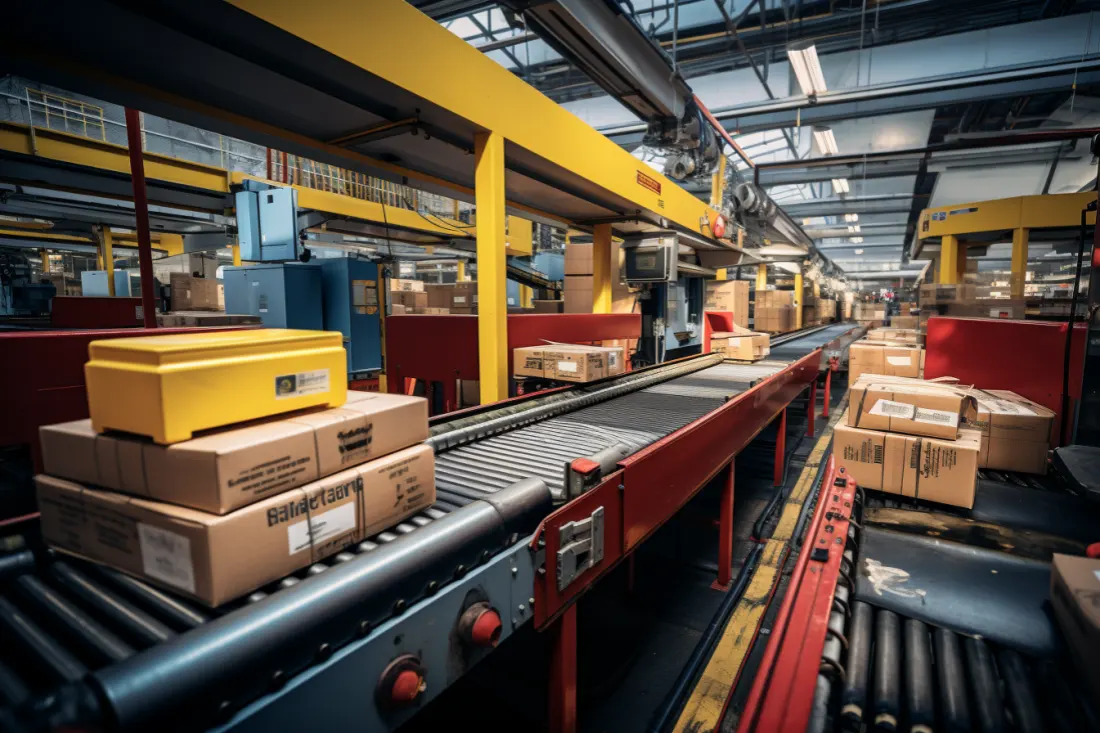
6. Environmental protection and sustainability of conveyor belts: the introduction of green technologies
Modern companies are increasingly focusing on sustainability while pursuing efficiency, especially in the field of industrial production and logistics. The design and use of conveyor systems is not only limited to improving operational efficiency, but is also beginning to make the transition towards environmental protection. Through energy efficiency, environmentally friendly materials, and sustainable design, warehouse conveyor belt systems are gradually contributing to the green revolution.
6.1 Energy Efficiency
Conventional conveyor belt systems often waste energy unnecessarily due to long hours and high frequency of operation. To counter this, modern conveyor belt systems have introduced intelligent energy management technologies. Today, many conveyor systems operate on demand by installing advanced motor control systems and gravity sensors. For example, when the system detects that there is less cargo, the conveyor belt automatically reduces its speed or even stops running, thus reducing power consumption. More efficient motors and variable frequency technology are also being adopted on a large scale, ensuring that the conveyor belt adjusts its energy requirements according to the load and operating conditions, while staff are able to manually rationalize the speed and power of the conveyor belt according to the volume of goods at a given point in time.
Some logistics centers, especially those with large global supply chain nodes, are already putting this technology into practice. For example, some warehousing and logistics companies have combined solar power systems with conveyor belts to not only reduce the use of conventional electricity, but also to significantly reduce CO2 emissions. This energy-efficient design not only reduces the pressure on the company’s environmental policy, but also saves long-term operating costs.
In addition, the use of recycled energy technologies is increasing. Some conveyor systems can recover the kinetic energy of a conveyor belt as it decelerates and store it for subsequent acceleration or re-operation. This technology is similar to braking energy recovery systems for electric vehicles and can further reduce energy consumption. With the introduction of these innovative technologies, conveyor belt systems are not only limited to the role of “movers” in logistics, but also become an important tool for companies to achieve their energy saving and emission reduction goals.
6.2 Use of environmentally friendly materials
The use of environmentally friendly materials in conveyor belt systems is becoming more and more common. In the past, conveyor belts were mostly made of petroleum-based plastics and rubbers, which are durable but not recyclable and have an impact on the environment during production and disposal. To combat this problem, many companies have begun to use renewable or recyclable materials to manufacture conveyor belt systems.
For example, conveyor belts made of natural rubber and other environmentally friendly materials are becoming increasingly popular. These materials not only reduce the use of petrochemicals, but also offer good durability and recyclability. Even after a conveyor belt has reached the end of its useful life, many environmentally friendly materials can be reused through recycling, reducing the need for waste disposal.
In the manufacturing sector, certain companies are experimenting with the use of biodegradable materials in the manufacture of conveyor belts. This innovation, while still in its early stages, is promising. Biomaterials not only reduce carbon emissions during the manufacturing process, but also degrade naturally at the end of a conveyor belt’s life cycle, minimizing its environmental impact. The widespread use of such materials will bring the conveyor belt industry closer to truly green manufacturing.
In addition, some high-tech industries, such as the electronics manufacturing industry, have introduced conveyor belt systems that are anti-static and environmentally friendly. These belts do not contain hazardous substances, ensuring stability and reducing the environmental impact when transporting delicate equipment.
6.3 Case Study: Sustainability Implementation in a Green Logistics Center
Logistics giants have played a key role in promoting sustainability, and DHL has set an example by introducing environmentally friendly conveyor belt systems in its logistics centers around the world, not only with energy-efficient electric conveyor belts, but also with renewable energy sources, such as solar and wind, to power the conveyor belt systems in some of its centers. This green supply chain concept not only improves operational efficiency, but also significantly reduces carbon emissions.
In addition to energy management, DHL is also committed to reducing waste generation in logistics operations. By introducing custom conveyor belts made of recyclable materials, they not only extend the life of the equipment, but also reduce the cost of waste disposal when the equipment is phased out. This sustainable equipment management model not only enhances the company’s environmental image, but also ensures the efficient operation of logistics services.
Similarly, some air logistics centers have adopted green conveyor technology in their baggage handling systems. These conveyor belts are made of durable and environmentally friendly materials, which not only increase the lifespan of the equipment, but also reduce maintenance and energy consumption in day-to-day operations. This technological innovation allows airports to cope with the massive demand for baggage transportation while reducing their environmental footprint, in line with today’s global trend towards green airports.
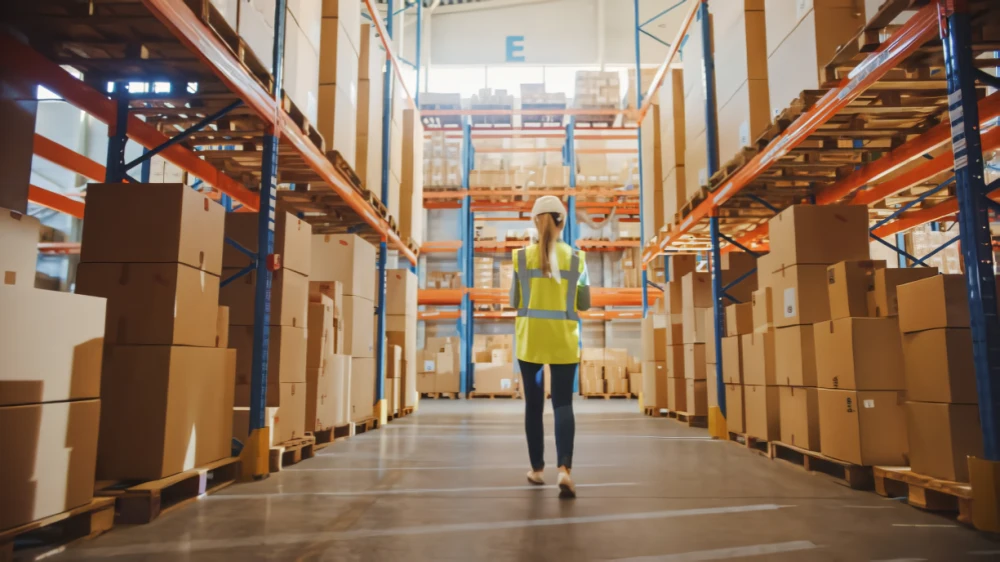
7. Common challenges and solutions for conveyor systems
Conveyor belt systems undoubtedly shine in many industries, but like all complex mechanical systems, they are not immune to a variety of difficult challenges. Just as a fast car needs regular maintenance, the continued efficient operation of a warehouse conveyor belt system depends on a series of sophisticated maintenance and upgrades. Organizations must effectively address the challenges of maintenance, downtime and integration with other systems to ensure that this “logistics lifeline” remains smooth and efficient.
7.1 Maintenance and Repair: Planning Ahead
A conveyor belt system may look rugged, but when it’s operating under heavy loads for long periods of time every day, wear and tear and breakdowns are inevitable. For example, the rubber conveyor belt section tends to be the most susceptible to damage, especially during frequent high-load transportation. As you can imagine, a conveyor belt running non-stop during peak hours without the slightest inspection is like putting an unmaintained harness on a horse-drawn carriage, which could very well paralyze the entire system if something goes wrong.
To solve this problem, many organizations are adopting predictive maintenance techniques. This sounds a bit like the “sixth sense” of a conveyor belt system. Sensors constantly monitor conveyor belt tension, temperature, vibration, and other parameters, as if taking the pulse of the machine’s health in real time. In this way, facility managers can be alerted to system failures before they occur, just as a doctor would be able to diagnose a heart attack before it occurs by looking at the symptoms, thus avoiding a sudden shutdown of the system.
In addition, modular design has been the “savior” of this problem. The modular design of the conveyor system allows companies to replace only the damaged portion of the system when repairs are needed, without having to shut down the entire system. The design is as flexible as building blocks, allowing maintenance personnel to quickly restore the system in a short period of time, ensuring that the production line is not disrupted. This not only reduces downtime, but also means that companies don’t have to pay a huge cost for a minor failure.
7.2 Downtime and system upgrades: time is money
Once a company’s production line has stopped, it’s as if the pause button has been pressed on time, and time is money! Especially during peak logistics and manufacturing periods, any minute of downtime means delayed orders and dissatisfied customers. Conventional conveyor systems often require the entire production line to be shut down for regular maintenance. Modern companies, however, can no longer afford to go “slow”.
In order to solve the problem of downtime, online maintenance systems have been developed. The biggest advantage of this system is that it allows maintenance personnel to carry out partial repairs while the conveyor belt is still running. How is this possible, you may ask? In reality, it’s as complicated as changing an airplane engine while keeping the plane still in the air, but advances in technology have made this incredible-sounding operation a reality. With in-line maintenance technology, conveyor systems are able to clean, adjust, and even replace some components without interrupting the entire workflow.
In addition, the introduction of hot-swappable technology allows organizations to quickly replace some critical components while the conveyor system is running. The biggest advantage of this technology is that companies can upgrade components without shutting down the system, just as easily and efficiently as changing the battery on a cell phone. Imagine a production line that is still busy while a technician is quietly replacing a faulty part in a corner. Such upgrades minimize downtime and ensure that production runs efficiently.
7.3 Integration with other systems: Breaking down “information silos”
The conveyor belt system is no longer an isolated “handling tool”, but a vital link in the entire smart factory or logistics center. With Industry 4.0 and Smart Manufacturing, the integration of warehouse conveyor belt systems with **Warehouse Management Systems (WMS) and Manufacturing Execution Systems (MES)** is becoming increasingly important. However, this is not as simple as building blocks, data exchange and compatibility between different systems has become a pain point for many enterprises.
How to break the “information silo”? Internet of Things (IoT) technology is the answer. By connecting the custom conveyor belt system with other smart devices, companies can realize real-time data sharing in different production and logistics processes. It’s as if each system has a “conversation” with the other, so they can “talk” to each other and collaborate on tasks. For example, IoT enables conveyor belts to automatically adjust their speed and capacity based on the operating status of other equipment in the warehouse, avoiding congestion and wasted resources.
Meanwhile, the introduction of cloud computing makes this integration even more flexible. By uploading the conveyor’s operational data to the cloud, companies can analyze and manage this data in real time on a global scale. This not only helps companies make more accurate decisions, but also provides important data support for future system optimization. As you can imagine, an enterprise adjusting the running status of a conveyor belt through an intelligent system is as flexible as a race car driver adjusting the gas pedal and brakes during a race.

8. Future outlook: trends in conveyor belt technology
The conveyor belt technologies that are currently available on the market or under development show diverse trends. These trends are not yet widespread globally, but are already being piloted in some companies or industries. The following describes several major trends and provides an analysis of the possibilities for future expansion in conjunction with available market data and forecasts.
8.1 Lightweight Materials and Environmentally Friendly Belts
The conveyor belt manufacturing industry is exploring the use of lightweight and eco-friendly materials to replace traditional rubber and PVC materials. These new materials not only offer greater durability, but are also in line with current global environmental trends. For example, some companies are already developing and piloting conveyor belts made from biodegradable materials that naturally decompose once they reach the end of their useful life, with less impact on the environment.
A preliminary forecast indicates that the global market for environmentally friendly materials is expected to grow at an annual rate of approximately **6-8%** over the next five years, driving an accelerated use of renewable materials in a number of manufacturing sectors, including conveyor belts. While these eco-friendly conveyor belts are currently only being piloted in a handful of companies, it is likely that we will see more companies adopting such materials in the future as global environmental regulations become more stringent.
8.2 Modular and Reconfigurable Belts
Another trend to watch is modular and reconfigurable conveyor systems. These systems can be quickly adapted and reconfigured to the actual needs of a production line or logistics center. In the market, some smart factories have already piloted this technology, especially in industries with high seasonal fluctuations (e.g. electronics manufacturing or e-commerce logistics). For example, certain modules of a conveyor belt can be quickly expanded in capacity during peak seasons, while fewer modules can be used during the off-season, thereby reducing energy consumption and operating costs.
According to industry forecast reports, modularly designed conveyor systems will become one of the standard features of industrial production equipment in the next 5-10 years. This trend is in line with the demand for more flexible and customized production and logistics systems, especially in high-load production, where flexibility and ease of maintenance will drive their popularity.
8.3 Energy recovery technology for conveyor systems
Energy recovery technology is also increasingly being used in conveyor belt systems. The principle of this technology is that when a conveyor belt slows down or stops, the system converts the excess kinetic energy into electrical energy that is stored for use in other equipment or for energy consumption when it is started up again. This technology was first used in regenerative braking in electric vehicles, and is now being introduced in conveyor systems in some logistics centers and manufacturing plants to reduce overall energy consumption.
Although the cost of energy recovery technology is currently relatively high, the potential long-term energy savings are significant. According to some pilot programs, energy recovery systems can save** 10-20%** of energy consumption, especially in high-frequency operation scenarios. As the cost of the technology falls and the importance of energy efficiency rises, energy recovery technology is expected to gradually spread over the next few years.
8.4 Low-noise conveyor belts
Low-noise conveyor systems have become a new direction in research and development as companies increase their demands on the production environment. Some conveyor belt manufacturers have begun to develop low-noise designs that significantly reduce noise pollution during operation through the use of new materials and structural optimization. This is particularly attractive to manufacturing companies that are focused on the working environment.
According to industry research data, low-noise conveyor belts are expected to gradually replace existing conventional conveyor belts over the next 10 years, especially in highly noise-sensitive areas or in production lines that need to maintain a low-decibel environment, such as food-processing plants and high-precision manufacturing industries. The expansion of this trend will push factories to find a better balance between maintaining employee health and productivity.
8.5 Demand for conveyor belts in emerging markets
Finally, not to be overlooked is the rapidly growing demand for conveyor belts in emerging markets. As industrialization accelerates in Asia, Africa, and Latin America, there is a strong demand for efficient, flexible conveyor systems in these regions. According to market research forecasts, demand for conveyor belts in emerging markets is expected to grow at an average annual rate** of 8-10%** over the next 5-10 years, particularly in logistics, e-commerce and manufacturing.
The growth in emerging markets is not only driving the expansion of existing technologies into new applications, but also providing an opportunity to promote new materials, modular designs and environmentally friendly conveyor belts. Increased manufacturing demand due to globalization is further driving companies in these regions to look for more efficient conveyor systems to increase productivity and reduce costs.
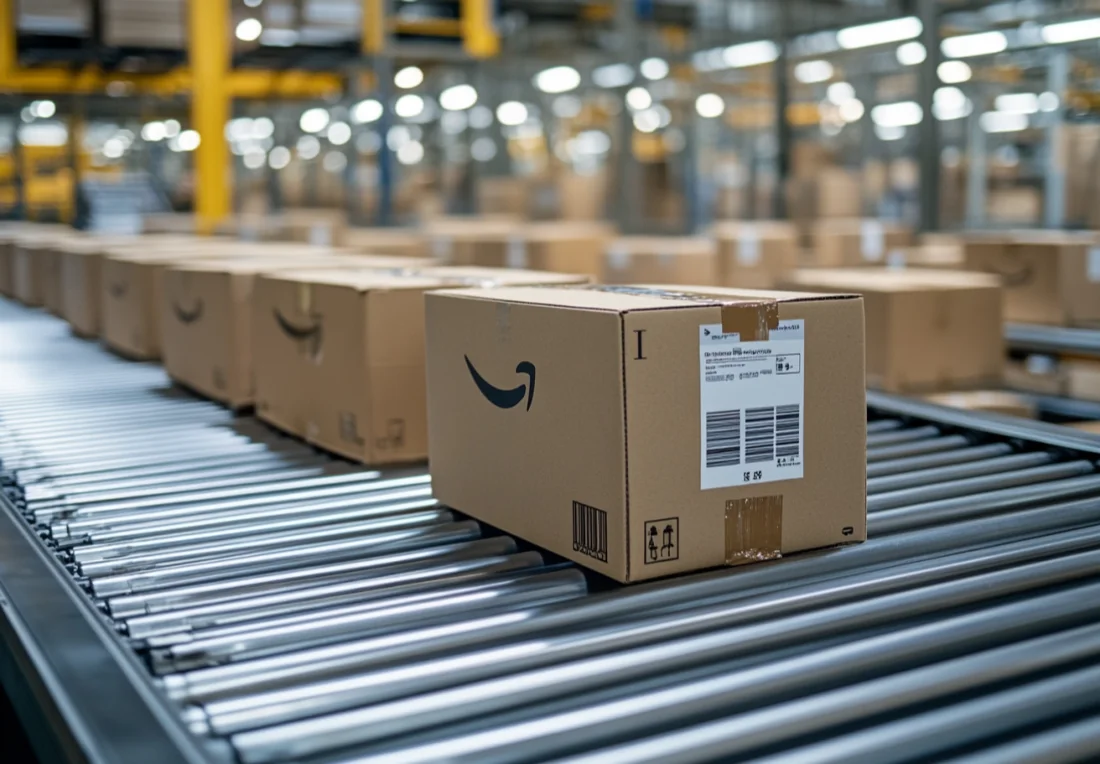
9. Conclusion: Why conveyor belts are the secret weapon of logistics centers
Conveyor systems have evolved beyond the traditional means of transportation. It is no longer just a “material handler”, but the “hero” of modern logistics and manufacturing centers. Whether it’s handling goods on an automated production line or efficiently flowing through a warehouse system, conveyor belts have become a core technology that ensures smooth operations, reduces costs and improves competitiveness. What’s even more exciting is that the future of conveyor systems will bring even more possibilities and opportunities for innovation as new materials, environmentally friendly technologies and modular designs continue to advance.
As these emerging technologies become more widely utilized, companies will be faced with more strategic choices. How do you balance cost and technology upgrades while maintaining efficient operations? How do you ensure that your conveyor systems are flexible enough to meet immediate needs while also responding to future uncertainties? These questions will undoubtedly challenge companies to adapt and innovate. What do you think?


